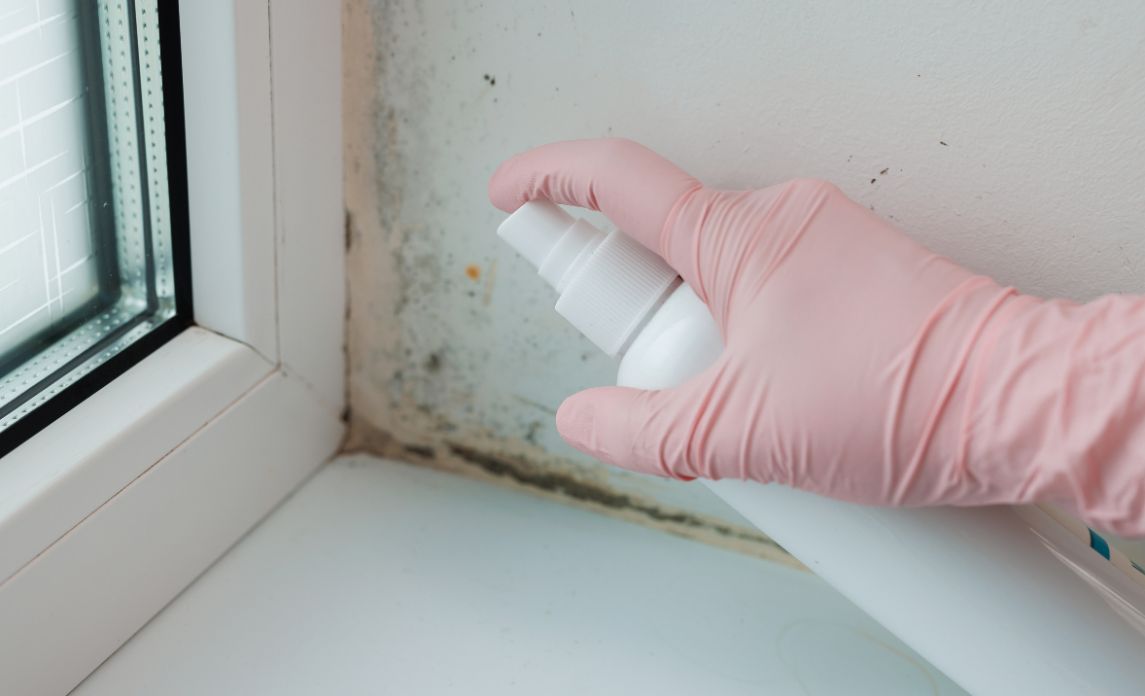Often seen as unsightly and unwelcome houseguests, mould and mildew are more than just an aesthetic concern. These fungi can pose mild to severe health risks and cause structural damage if left unchecked.
In this article, we will explore how to effectively remove mould and mildew, the importance of doing so, and steps you can take to prevent their return.
How to Remove Mould and Mildew
The best way to deal with mould and mildew is to call professional cleaners to handle the job. With the help of commercial cleaners like Crewcare—who come with the right equipment and years of expertise—you can rest assured that your space will be restored to its immaculate state.
You can still take care of matters on your own, however, especially if you don’t have an infestation yet. When dealing with mould and mildew, it's crucial to approach the issue systematically to ensure thorough removal. Here are the steps to take:
- Safety Precautions
Before you begin, prioritise safety by wearing protective gear, such as gloves, an N95 respirator mask, and eye protection. Adequate ventilation is also essential, so open windows or use fans to prevent the inhalation of mould spores.
1. Identify the Source of Moisture
Mould and mildew thrive in damp environments. Thus, identifying and addressing the source of moisture is crucial. Fix any leaks or water damage to prevent reinfestation.
2. Isolate the Area
To prevent the spread of spores, isolate the affected area. You can use plastic sheeting and tape for this purpose.
3. Clean the Affected Surfaces
The method of cleaning depends on the type of materials affected. Non-porous surfaces like glass and tile can be cleaned with a solution of water and detergent or a mixture of one part white vinegar to one part water. For porous materials like drywall, wood, or fabric, on the other hand, it may be necessary to remove and replace them.
4. Use Appropriate Mould-Removal Products
There are various commercial products available that can be effective in eliminating mould and mildew. These include dedicated mould and mildew cleaners, standard detergent, and even borax. Whichever you choose, make sure to follow the instructions carefully. That said, avoid using bleach as a primary solution as it may not be as effective for long-term removal.
5. Scrub Thoroughly
Gently but thoroughly scrub the mould using a brush or sponge. Dispose of cleaning materials and sponges in a sealed plastic bag to prevent spore spread.
6. Dry the Area
After rinsing, dry the cleaned area completely. Using dehumidifiers and fans can help maintain low humidity levels and prevent future mould growth.
7. Monitor for Recurrence
Keep a vigilant eye on the previously affected area to ensure that mould does not return and promptly address any recurring issues.
Why It's Important to Remove Mould and Mildew
Removing mould and mildew removal is not just a matter of aesthetics. It’s also crucial to prevent health concerns, such as allergies, respiratory issues, and fungal infections. Moreover, long-term exposure to mycotoxins produced by certain moulds can lead to severe health problems.
The unpleasant odours produced by mould and mildew can also create a less comfortable and uninviting atmosphere. In addition, they can cause unsightly stains and discolouration, reducing property value.
Over time, mould and mildew can also weaken foundational structures, compromising the integrity of a building and endangering its occupants. This can result in various legal and insurance issues.
Lastly, mould and mildew can increase maintenance costs. If left unchecked, mould can spread to other areas, making the problem more challenging to control.
How to Prevent Mould and Mildew
Preventing mould and mildew is often more manageable than dealing with an infestation. Here are steps to help you keep these fungi at bay:
- Control Moisture. Address any leaks or water damage immediately and use dehumidifiers in areas prone to high humidity. It’s also crucial to maintain proper ventilation by using exhaust fans in bathrooms and kitchens.
- Regular Cleaning. Regularly clean and dry areas susceptible to mould, such as bathrooms, kitchens, and basements. You can also use mould-resistant paints or materials in these areas.
- Keep Indoor Humidity Low. As much as possible, maintain indoor humidity levels below 60% to inhibit mould growth.
- Conduct Regular Inspections and Maintenance Procedures. Regularly inspect your property for signs of leaks and water damage. Also, ensure proper insulation to prevent condensation on surfaces.
- Dry Wet Materials Quickly. If materials get wet, dry them promptly within 24 to 48 hours to prevent mould growth.
- Use Mould-Resistant Products and Materials. Consider using mould-resistant building materials and furnishings in your home.
Removing, preventing, and understanding mould and mildew is crucial for maintaining a healthy, safe, and aesthetically pleasing environment. By following the steps outlined in this article, you can effectively combat mould and mildew issues, reduce health risks, protect your property, and enjoy a mould-free living or working space. Remember that timely action is key to managing these unwanted guests and maintaining a clean and safe environment.


